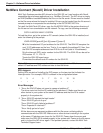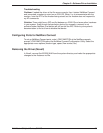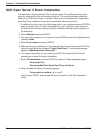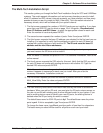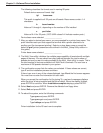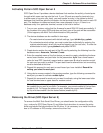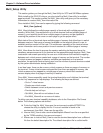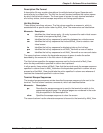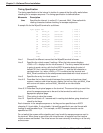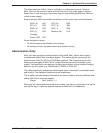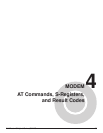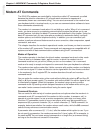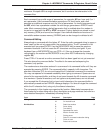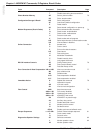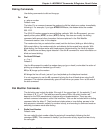
60 MultiModemISI Hybrid Series, ISIHI-2S
Chapter 3—Software/Driver Installation
Timing Specification
The timing specification is the interval in tenths of a second that the utility waits before
checking for an escape sequence. The timing specification is defined below:
Mnemonic Description
time Specifies the interval, in units of 0.1 seconds, Multi_View waits while
reading characters before checking for escape sequences.
A sample file for the Wyse50 terminal is as follows:
wy50 wyse50 w50 ; line 1
vs Shift_F1 \001' \015 ; line 2
vs Shift_F2 \001a\015 ; line 3
sw Shift_F3 \001b\015 ; line 4
cm Shift_F4 \001c\015 ; line 5
cm Shift_F5 \001d\015 ; line 6
lm Shift_F6 \001e\015 ; line 7
qm Shift_F7 \001f\015 ; line 8
ps \033w0 ; line 9
ps \033w1 ; line 10
clear \033+ ; line 11
time 1 ; line 12
Line 1 Gives all the different names that the Wyse50 terminal is known.
Line 2 Specifies the virtual screen 0 settings. When the help screen displays,
<Shift>+<F1> displays for the virtual screen 0. The entry means the terminal
is going to send a string with the first ASCII character being the start of
header (01 Hex), second character a hyphen (-), and the last character a
carriage return <cr> when <Shift>+<F1> is entered on the terminal and
Multi_View is switched to the shell/process associated with virtual screen 0.
Line 3 Specifies the entry for virtual screen 1.
Line 4-8 Describes the hot keys to switch between the current and previous virtual
screens, create a new virtual screen, display the hot key help, quit Multi_View
with a zero exit status, and end Multi_View with a non-zero status
respectively.
Lines 9,10 Describes the physical pages on the terminal. The second string on each line
gives the escape sequence to be sent to the terminal to switch to the
appropriate physical page.
Line 11 Clear string to clear the screen.
Line 12 Specifies at least a 0.1 second wait in reading data before going ahead and
check for hot keys.
Each character in the escape sequence or hot key can be specified as an ASCII
character if it is printable. If not printable, it should be specified in an octal format with
leading 0s and preceded by a \. For example, an ASCII escape character can be
specified as \033.
Do not switch the screen while outputting as it may break the escape sequence sent to
the terminal. When there is more than one virtual screen, all outputs from the inactive
virtual screens are blocked. The virtual screen the user currently is working on is the only
active screen.



